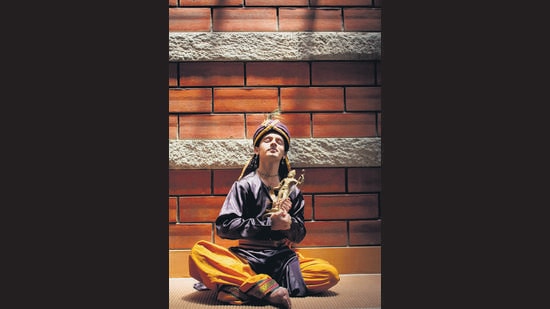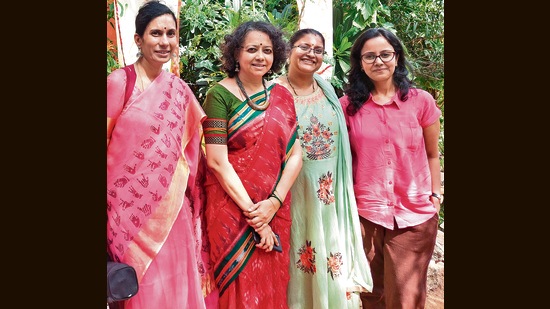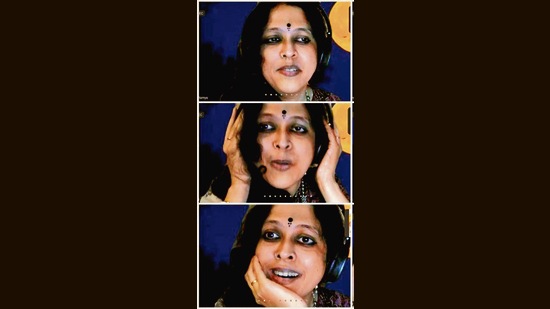Amid lush mountains, fed by rich rivers, there was once a region of great prosperity, and relative peace. Then came invaders from elsewhere who wanted the region’s riches. Bit by bit, then chunk by chunk, they claimed them. They were heroes in their own tale. So, for a time, they became heroes in this one too. And who doesn’t want to be a hero?
The foreigners eventually left. They’d suffered crushing defeats and agreed it was time. But, as their ships drew away, the region they left wasn’t the region it had been. That is the story of colonialism around the world. And it is the tale of how India, along with precious metals and materials, lost many of its stories.
The tales, though thousands of years old, had lived on in their people. Most had never been written down. They’d been painted; carved into stone and wood; but a story must be told, in order to survive. Without the retelling, it fades. Over centuries, once-rich stories faded, in all corners of the land. And so it was that when the region found prosperity again, the people looked around in confusion. They had new metals and materials. But they knew there had been more.
This is how Sharat Prabhath might tell the story of India’s missing tales. It’s how his grandfather and great-grandfather might have. He comes from an ancient line of storytellers. Now, he’s telling stories again.
His tales are populated with gods and goddesses, heroes, mythical creatures and magical worlds, but also celebrity bad boys and current affairs. He performs his harikatha (a form of traditional discourse mostly seen in peninsular India) in his mother tongue of Kannada, as well as in English and Hindi. As his ancestors did, he uses song and dance, humour, satire, even everyday events, to keep the narrative alive.
“For a long time, our traditional arts and crafts were looked down upon. Our practices were called primitive,” says Prabhath, 32. But our tales matter, he adds, because “time and space are abstract; stories add meaning to them.”
In a world that has returned to storytelling as a means of improving communication skills and confidence, self-expression and education., brand-building even , Indian oral storytellers are venturing into hitherto unexplored areas. They’re using the formats and legends of their roots, but adapting these for the 21st century, adding contemporary twists and perspectives; they are merging storytelling and science; they are using stories for group therapy; and they’re uncovering legends largely forgotten that have lived on in art and architecture.
In Bengaluru, Aparna Jaishankar, 44, is drawing on ancient paintings, temple art and academic research to offer new perspectives on tales from the Mahabharata. The ticketed events she helms draw people aged 19 to 90.
In Chennai, Deepa Kiran, 45, currently pursuing a PhD in storytelling and language, is trying to bridge the gap between the sciences and humanities using storytelling devices (rocks that talk; tales about the history of the sciences in India).
“In our oral storytelling traditions, it was adults who would listen to the stories. In the same vein, we would like to bring adults into the world of stories,” says Meghana Bommatanahalli, 47, of the Hyderabad Storytellers Association, which holds story circles in which participants swap tales around a predetermined theme.
And amid the trauma of the pandemic, in 2020, five storytellers set up the Indian Storytellers Healing Network (ISHN), to promote the sharing of stories as a means of healing. The sessions are still held online, the core group of five storytellers themselves scattered across the country. An ISHN storyteller begins with a tale, then those in the audience share their reflections and accounts. “The telling of one’s own story lightens a load,” says ISHN member Sowmya Srinivasan, a psychologist. “Listening to another’s tale promotes empathy and compassion. Stories are how people feel less alone.”
Take a look, then, at some of India’s contemporary oral storytellers, the traditions they’re carrying forward, and the new ones they are crafting.
Curses, consent and Kolkata biryani
Aparna Jaishankar is committed to rendering the invisible visible again. So, in her storytelling, she spotlights unusual tales hidden in familiar places: tales of consent and ancient anti-caste warriors in the epics, folk tales tucked away atop famous temples, and culinary secrets from a few hundred years ago that are now forgotten.
Reveal these tales and they breathe again and evolve, says Aparna, 44. She likes to tell of the time she narrated a tale from the Mahabharata to a group of teenagers in Bengaluru. In the tale, Arjuna resists the advances of Urvashi, the most beautiful of the apsaras; enraged, she responds by putting a curse on him.
The teenagers saw this as a story not about power and desire, Aparna says, but about consent. “It opened up conversations about consent for both genders. They were discussing how it is important to learn to handle surges of desire.”
Aparna has been a professional storyteller since 2015, with a special focus on the Mahabharata. For audiences below the age of 10, she keeps to the familiar tales. For teenagers, she picks stories where there is dilemma and room for interpretation.
It’s when she’s telling the tales for older audiences that it gets most interesting. Aparna has been holding monthly ticketed shows for adult audiences since 2016, and here she discusses, for instance, how Duryodhana — the oldest of the Kauravas and the villain of the Mahabharata — is still worshipped in parts of Kerala and Uttarakhand as someone who sought to abolish caste.
Two temples to Duryodhana still stand, one in each of the states. “In the temple in Kollam, Kerala, the origin story is that certain castes were not allowed to share food with the rest of the community, and Duryodhana abolished this practice,” Aparna says. “In Osla, Uttarakhand, it is said that the people loved Duryodhana so much that after he died in the Great War, a river was born of their tears.”
Meanwhile, in Odisha, there’s an alternative take on how Krishna first revealed himself to Arjuna. “Traditionally, it is believed that when Arjuna hesitates amid the Great War, Krishna motivates him by giving him the Geetopadesh. That’s supposed to be the first time Krishna reveals himself as a form of Vishnu,” Aparna says.
But in the Odia Mahabharata, that’s not the first time at all. The first time is before the Great War, when Arjuna goes on a pilgrimage alone, to reflect upon the futility of battle. Krishna reveals himself as a creature made up of parts of nine different animals, each with its own significance. “Finally appearing to Arjuna as a whole, he says, ‘You are too small to see the whole picture, and so you must react based on what he is shown’.” The tale, referred to as that story of the Nabagunjara, is unique to this region, and is depicted in Patachitra art and in the Neela Chakra or metal wheel atop the Jagannath Puri temple.
Apart from stories of the Mahabharata, Aparna is now working to bring more storytelling into schools, particularly history classes. Before the pandemic, she held weekend sessions at libraries in Bengaluru, about Indian empires such as the Cholas and Rashtrakutas.
“What we learn in our textbooks is only a small section of history that is presented quite boringly,” Aparna says. “Take the Kolkata biryani and why it contains potato, for example. Dig in and you’ll find that it has something to do with the Doctrine of Lapse.”
Kings, demons, Socrates and Mark Twain
Sharat Prabhath, 32, is the great-grandson of Venkanna Dasa, one of the great haridasas. These were traditional storytellers who performed in what are now Karnataka, Andhra Pradesh, Tamil Nadu, Telangana and Maharashtra.
Their art form, harikatha, involved singing, dancing and philosophising, often with a bit of humour thrown in. They typically enacted tales of kings and demons, myths and epics. “But I have also heard that my great-grandfather performed a harikatha on Swami Vivekananda,” Prabhath says. “This was in the early 1900s. This gives us an idea of how open people were even back then.”

Prabhath is now trying to contemporise harikatha, while making sure it is authentic and retains its essence . He’s been performing since he was 19, but that was already 2009, so “I have never watched a harikatha performance in the way it was performed back in the day,” Prabhath says. “The style I have incorporated is based on descriptions from my father, teachers and scholars, and my own additions. I still feel like a newborn every time I go on stage.”
Prabhath performs in Kannada, English and Hindi, and is brushing up on his Sanskrit. He draws from the devotional music of Purandara Dasa and ancient poetry in Marathi and Tamil, but also writes his own songs. Between songs, he breaks into extempore oration. Here, he might quote Socrates or Mark Twain; talk about everyday struggles such as finding time to go to the gym; discuss Elon Musk, the war in Ukraine, terrorism and the decline of communism.
This helps hold the audience’s attention through a traditional performance, he says, serving a function that has long-existed in this tradition: that of the upakatha or subplot. “It is traditional to deviate to unconnected stories, just to jolt people out of their reverie.”
Sometimes, Prabhath just borrows a joke. A favourite is the one in which Sherlock Holmes and Dr Watson go camping. Holmes asks Watson what he sees in the night sky above them. The good doctor replies with an elaborate take on astrology, theology and Man’s place in the universe. “What does it say to you, Holmes?” he finally asks.
“Watson, you idiot,” Holmes replies. “What it tells me is that someone has stolen our tent!”
Rocks that talk, numbers that dance
Deepa Kiran is many things: a single mother to two boys, a Bharatanatyam dancer, a nutrition and dietetics graduate, a glider pilot, a coder. In her years as a student, she says, she was invariably been disappointed by her science textbooks.
In 2007, while studying for an MPhil, she explored the language of science communication. A key problem, of course, was that the scientific and artistic communities were not collaborating. In her role as a storyteller, Kiran aims to bridge this gap.
For instance, she tells stories to children about stones and rocks. These range from the mythological origin tales for formations such as the Rama Setu to the science of how the Deccan Plateau was born. “The aim is to offer relevant stories that serve to create a curiosity and emotional connect. And to interestingly present information,” says Kiran, 45.

In her interactive, musical storytelling sessions, audience members get to think, guess at answers, sing and dance along. How does her young audience respond? “There are always spontaneous conversations,” Kiran says. There are more lingering impacts too. “One parent of a four-year-old said he hadn’t ever gone near rocks before. But the Monday after the storytelling session, he apparently ran to the rocks in his school grounds and began telling his classmates about how rocks are our friends and we have to take care of them.”
Following another of her passions — tales of science from Indian history — Kiran has conducted storytelling sessions for the Birdwatching Association of Andhra Pradesh and the Indian Science Congress, in 2021. “I told stories on zinc extraction (India was one of the very few countries that knew how to do this), on chess and humbling a king, and I introduced math in a story through dance, as numbers can be converted into a jathi (rhythmic pattern).”
Kiran is currently pursuing a PhD in storytelling and language from the Indian Institute of Technology (IIT)-Madras. “We don’t have too many students from literature and the humanities here. So the other interesting upside is I am trying to connect with students from science, math, technology, metallurgy and other fields, who are interested in creative education,” she says.
She is also working on a series of stories about India, which she shares via Instagram (@over2deepakiran) and YouTube (Deepa Kiran). She’s taken a break for exams, but “I have an unending number of stories and would love to go on,” she says.
A billion untold tales
The many hues of love; letters (written, read or heard of); coffee memoirs: these are some of the themes that have been picked for monthly story-swap sessions at the Hyderabad Storytellers Association (HYSTA). The sessions were launched in February, in English, Telugu and Hindi (Urdu swap meets are in the works).
“We are all stories, some told, many untold,” says Krishna Chaitanya, 42, a storyteller and HYSTA member. “It is our mission to build a conversation around stories as a medium of expression and support. Here, stories are told and listened to in a non-judgmental, nurturing space, followed by a sharing of individual takeaways that accentuate how the stories connected with each one’s experiences.”
HYSTA was founded in 2019. “Storytelling for adults has such a rich history in India, but it’s one that is being fast forgotten. In storytelling traditions such as the burrakatha and oggukatha, it was adults who would listen. We want to revive that,” says founding member Meghana Bommatanahalli, 47.

The group is made up of storytellers from different professions: business analysts, former software engineers, content writers, teachers, dancers, singers, psychologists, parenting coaches, practitioners of neuro-linguistic programming.
On average, sessions draw 50 to 70 people. HYSTA also collaborates with libraries, art galleries and schools to conduct sessions for children. And there are plans for a festival to promote traditional storytelling forms with a contemporary twist as a way of bridging the gap between ancient oral narratives and the modern world.
Meanwhile, the swap sessions are generating all-new tales. In the session themed The Many Hues of Love, one participant narrated a tale about a Valentine’s Day she spent with her hero, her father. Another spun a yarn of elusive meetings and a tragic parting between two crazy lovers… who turned out to be cars.
How the light gets in
Jyoti Pande sees stories as more than a vital art form; she believes they can heal.
“They have the power to bypass the conscious mind, since there are no defences in play when a person is listening to a story. Stories work at a deeper level than casual conversation,” says Pande, a psychologist and member of the Indian Storytellers Healing Network (ISHN).
ISHN was founded in 2020 by five storytellers based in Bhopal, Mumbai, Bengaluru and Coimbatore. Amid the pandemic, the aim was to use stories to promote self-exploration, restoration and healing. The sessions are still held online.

The organisation conducts monthly story circles around themes that range from shakti or inner strength to the idea that “there is a crack in everything; that’s how the light gets in”. In each session, the moderator tells a story, after which there are activities such as role-play, drawing, self-reflection and discussion.
ISHN storytellers source their stories from existing ones and their own life experiences. ISHN member Ramya Iyer, for instance, looks for stories that move her. One of her favourites is an African folktale called the Secret Heart of the Tree, in which a young hare is out on an adventure and rests in the shade of an old baobab tree.
“He sits under the tree, and he takes deep breaths,” says Iyer. “While I’m telling the story I take those breaths. And there are others who would feel the need to take them too.” The hare communes with the old tree and is rewarded with a walk into the tree’s secret heart, and the gift of a gold ring. Later a hyena tries to do the same, but he is not as kind as the gentle hare and gets stuck inside the secret heart of the tree.
Iyer has added a second chapter to the tale. “I bring in the hare’s son, who goes looking for the tree many years later, and is gifted with a journey into the secret heart. The young hare guides the hyena back out into the world. The touching forgiveness, a call to nestle and rest are some reflections that have left me very moved.”
Often, after a story is told, people discuss what they took away as its most salient message, and share stories from their lives along that theme. “A healing circle allows participants to become vulnerable, authentic and expressive,” says Geetanjali Kaul, a member of ISHN.
Sowmya Srinivasan, a psychologist and also a member, recalls sharing a story about how attached she was to her bicycle, which she left behind when she got married. “It left a void within me,” she says. “In order to fill that gap, many years later, I went on a cycling expedition in the Western Ghats. This triggered a lot of sharing from participants around what they had to leave behind or let go of and some poignant stories emerged.”
Personal stories work like magic potions, adds Poonam Joshy, the group’s fifth member. “I often tell stories from my life because I feel we tend to ignore our own stories. We never see their worth. But personal stories bring out many stories from listeners and suddenly they start seeing their own story with pride.”
Enjoy unlimited digital access with HT Premium
Subscribe Now to continue reading

